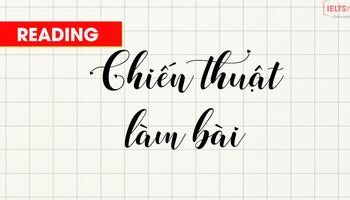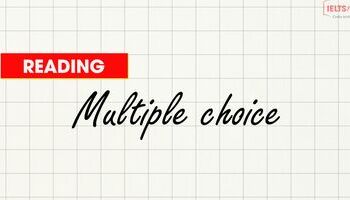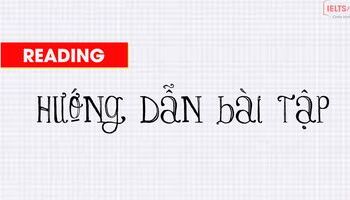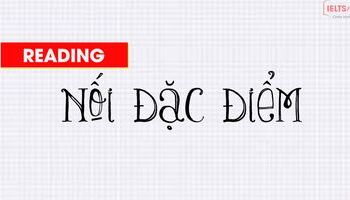Tết đã đến trên mọi nẻo đường rồi, ai cũng đang rạo rực niềm vui đón năm mới. Hôm nay IELTS Fighter sẽ dành một bài viết với những đoạn văn ngắn để cùng các bạn giới thiệu chủ đề Tết tiếng Anh thêm ấn tượng nhé.
Trong ngày Tết của Việt Nam mình có những món ăn đặc biệt như Bánh Chưng Bánh Tét, có những phong tục hay như lì xì....Bài viết này sẽ cùng bạn khám phá về những điều đó nhé. Bài viết song ngữ do đội ngũ thầy cô giáo biên soạn gửi tặng các bạn. Đặc biệt có bài IELTS Writing về Tết + từ vựng Tết bên dưới nha.
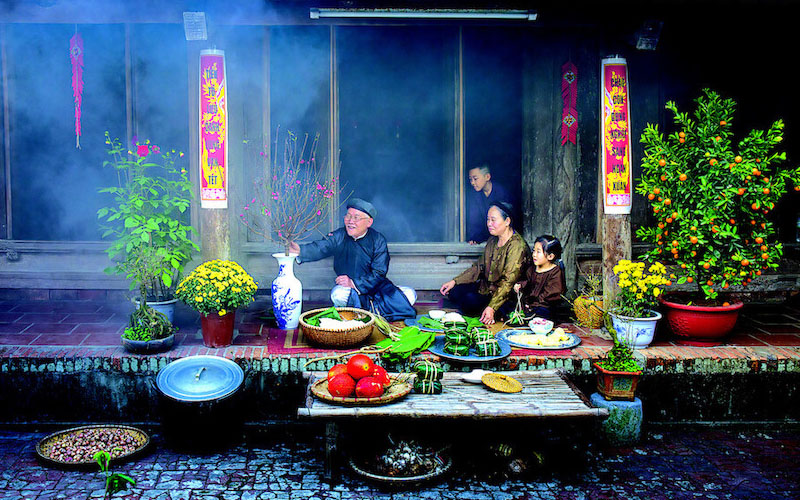
Đoạn văn ngày Tết tiếng Anh ngắn
Traditional Tet Holiday in Vietnam/ Tết Nguyên Đán của người Việt
| English | Vietnamese |
| The end of a year is always an ideal occasion for people to take a look back at what happened last year, what was done and what should have been done. This is also the time to eagerly prepare for the most important holiday of all - Tet Holiday. Tet Holiday, also known as Lunar New Year or traditional Vietnamese New Year, is the most important and anticipated celebration of the year. There is a variety of holidays within one year but Tet always holds a special place in our heart. Only Tet in particular can make us so excited and look forward to enjoying a traditional festive atmosphere. Traditional Vietnamese New Year has nothing but countless types of “specialty”. Specialty here does not refer only to the “cuisine” but also the deep-rooted traditional customs. First and foremost, it is impossible not to mention the heart and soul of Tet Holiday: its cuisine. Banh Chung, Banh Tet, gac sticky rice and pickled spring onions are typical Tet dishes, every single one of which carries a special meaning that all Vietnamese people can relate to. If Banh Chung is the hope for a prosperous and comfortable life, then red gac sticky rice embodies the color of good fortune throughout the year. In addition to the delicious food, the vibrant red and yellow of peach and apricot blossoms, of ornamental plants such as kumquat and pomelo bring so much excitement upon thinking about Tet holiday. A small branch of peach blossom in a Northern Vietnamese family or an apricot one in a Southern Vietnamese household is sufficient to make the atmosphere of their homes overwhelmed with spring spirit. Tet also gives Vietnamese people who live far away from home the urge to reunite with their family and relatives, so as to wallow in the hustle and bustle of making preparations for Tet Holiday. There is nothing happier and cozier than the whole family gathering around to prepare ingredients and wrap Banh Chung, spring-cleaning the house or simply display a branch of peach blossom in the living room. Each and every one of them creates a very special Tet that no celebrations outside Vietnam can replicate. | Cuối năm có lẽ luôn là thời điểm để mọi người nhìn lại những gì đã xảy ra trong năm vừa rồi, nghĩ về những điều mình đã hay chưa làm được. Đây cũng là thời điểm người người nhà nhà háo hức hướng đến dịp lễ quan trọng nhất trong năm - Tết Nguyên Đán. Tết Nguyên Đán, hay còn gọi là Tết âm lịch hoặc Tết cổ truyền của người Việt, là dịp lễ quan trọng và được mong chờ nhất trong năm. Trong một năm, người Việt chúng ta không thiếu những dịp lễ hay kỳ nghỉ khác, nhưng duy chỉ có Tết mới sở hữu những điều đặc biệt khiến chúng ta luôn nhớ đến cũng như háo hức muốn tận hưởng cái không khí mang đầy tính truyền thống này. Tết cổ truyền của người Việt không có gì ngoài các “đặc sản”. Đặc sản ở đây không chỉ là những món ăn mà còn là những phong tục cổ truyền có ý nghĩa lâu đời trong dịp lễ này. Đầu tiên, không thể không kể đến linh hồn của Tết, đó là những món ăn. Bánh chưng, bánh tét, xôi gấc, hành muối là tất cả những món đặc trưng và đều mang ý nghĩa nhất định của ngày Tết mà bất cứ người con Việt Nam nào cũng đều có thể liên tưởng đến. Nếu với bánh chưng, người Việt hy vọng về một sự ấm no, đủ đầy thì màu đỏ của xôi gấc được kỳ vọng sẽ là màu đem lại may mắn cho gia chủ trong cả năm. Bên cạnh các món ăn thì sắc đỏ và sắc vàng rực rỡ của hoa đào, hoa mai hay những loại cây như quất cảnh, bưởi cảnh cũng làm cho người ta cảm thấy rạo rực khi nghĩ về Tết. Chỉ một cành đào trong nhà của người miền Bắc hay một nhánh mai trong nhà của người đến từ miền Nam, dù là nhỏ thôi nhưng cũng đủ để làm cho ngôi nhà ngập tràn sắc xuân. Tết còn làm những người con xa xứ cảm thấy muốn về đoàn tụ với gia đình và người thân ngay lập tức cùng không khí nhộn nhịp, hối hả, tất bật chuẩn bị các món ăn, sắm sửa cho gia đình. Không còn gì hạnh phúc, ấm cúng hơn khi cả nhà cùng ngồi quây quần chuẩn bị nguyên liệu gói bánh chưng, dọn dẹp nhà cửa hoặc chỉ đơn giản là cắm cành đào trang trí cho phòng khách. Tất cả đều tạo nên một sắc thái Tết rất riêng không thể thấy ở đâu khác ngoài Việt Nam. |

Ẩm thực ngày Tết tiếng Anh
Traditional Tet cuisines in 3 regions of Vietnam/ Hương vị Tết 3 miền
| English | Vietnamese |
| Despite the common customs such as family gatherings and the hustle and bustle atmosphere during the Holiday, Tet in Vietnam contains cultural differences in each region. Beside the biting cold of the Northern and Central region, the dazzling sunshine of the Southern region, it would be a miss without mentioning the specialties of the three regions. There is a wide diversity of Lunar New Year’s cuisine when it comes to a particular area across our country. Let’s take a look with IELTS Fighter to see how tempting our specialties are! | Mặc dù đều có những phong tục chung như sum họp gia đình và mang chung không khí hối hả, nhộn nhịp của ngày lễ, Tết ở Việt Nam mang đậm sự khác biệt về văn hóa ở mỗi vùng miền. Bên cạnh cái rét của miền Bắc và miền Trung, cái nắng gay gắt của miền Nam, sẽ thật thiếu sót nếu ta không kể đến đặc sản ngày Tết ở ba miền. Ẩm thực Tết Nguyên Đán vô cùng đa dạng và phong phú theo văn hóa vùng miền trải dọc đất nước. Các bạn hãy cùng IELTS Fighter khám phá xem ẩm thực ngày Tết ở cả ba miền có gì đặc sắc nhé! |
| Northern Vietnam | Miền Bắc |
| Hardly can we find a meal of a specific Northern family without Banh Chung, gac sticky rice, stir-fried dishes, spring roll and pickled onions. While the square-shaped chung cake is expected to bring prosperity, a plate of rounded vibrant red color of gac sticky rice represents the hope of a lot of luck for the family in the new year. Besides their symbolic meanings, the dishes bring a harmony between different flavors when a large proportion of the dishes is rich in protein, pickled onions will help to balance the meal and whet the appetite of family members. | Các món không thể thiếu trong mâm cỗ ngày Tết của người Bắc là bánh chưng, xôi gấc, các món xào, nem và hành muối. Trong khi bánh chưng đại diện cho sự đủ đầy thì màu đỏ của xôi gấc tượng trưng cho kỳ vọng gặp nhiều may mắn của gia chủ trong năm mới. Bên cạnh ý nghĩa tượng trưng, các món ăn mang đến sự hài hòa giữa các hương vị khác nhau khi mâm cỗ chủ yếu giàu về đạm, hành muối sẽ giúp cân bằng bữa ăn và kích thích khẩu vị của các thành viên trong gia đình. |
| Central Vietnam | Miền Trung |
| Similar to Banh Chung, “Banh Tet” is also one of the main dishes in a meal of a family in Central Vietnam but it comes in the shape of a cylinder. Besides, there are other delicious specialties for example, fermented pork roll, fermented shrimp and pork soaked in fish sauce. These can be considered signature dishes of the Central region but to those who are not locals, they have really strong flavor and are also very unique. | Tương tự miền Bắc, miền Trung cũng có món bánh tét (một loại bánh giống bánh chưng nhưng được gói thành hình trụ) và một số đặc sản ngày Tết khác như nem chua, tôm chua và thịt lợn ngâm nước mắm. Những món ăn đặc trưng của miền Trung thường được những người từ phương xa đến nhận xét là có hương vị đậm đà và mang đậm chất riêng của vùng miền. |
| Southern Vietnam | Miền Nam |
| The cylinder-shaped sticky rice cake is also the star of the meal, which also goes together with caramelized pork and eggs, soup of bitter melon stuffed with minced pork and pickled onions. Bitter melon, which means “khổ qua” (mướp đắng) in Vietnam, conveys the message that bad luck will go away and luck will be brought to the family. | Món bánh tét ở miền Nam cũng là “ngôi sao” của mâm cỗ, thường đi kèm với món thịt kho tàu và trứng (hay còn gọi là thịt kho hột vịt), canh mướp đắng nhồi thịt bằm và hành muối. Mướp đắng hay còn gọi là khổ qua thường xuất hiện trong thực đơn của người miền Nam, nó tượng trưng cho mong muốn mọi chuyện đen đủi sẽ qua đi và may mắn sẽ tới với gia đình. |
Bài viết Lì xì tiếng Anh
The tradition of giving lucky money/ Lì xì ngày Tết
| English | Vietnamese |
| When referring to the habits and customs of Tet Holiday, it would be a shame to not mention the tradition of giving lucky money on the first days of Lunar New Year. It goes without saying that every one of us is fairly familiar with this tradition. New banknotes wrapped in red envelopes are gifted to people in the hope that good fortune and happiness will follow them all year round. Lucky money is mostly offered to the elders and children, reflecting the wishes that children will grow into maturity and older people shall have good health and longevity. With that being said, in the sense of good fortune, lucky money is no longer only for children and senior citizens. Nowadays, upon seeing each other for the first time in a new year, people of all ages would happily exchange red envelopes, together with the blessings that their lives will be full of good luck and happiness. Lucky money is also an indispensable part of the first New Year’s morning as first footers, the very first people to enter the house on New Year’s day, would never forget to bring lucky money along as a gesture of well wishes to the householders. The true meaning of lucky money lies in the greetings and the bright red color of the envelopes; as for how much money is in there, it really does not matter. | Nhắc đến phong tục tập quán ngày Tết, sẽ là thiếu sót nếu như không nhắc đến tục lì xì đầu năm. Chắc hẳn ai trong chúng ta cũng đã quá quen thuộc với tục lệ này. Những tờ tiền mới được bọc trong những phong bao màu đỏ được người ta dành tặng cho nhau để hy vọng sự may mắn, hạnh phúc sẽ theo mọi người suốt cả năm. Thường thì người cao tuổi và trẻ em sẽ là những người được tặng lì xì với ý nghĩa trẻ em sẽ lớn nhanh và những bậc cao niên sẽ mạnh khoẻ, sống lâu trăm tuổi. Tuy nhiên, với ý nghĩa đem lại may mắn, lì xì không chỉ dành riêng cho trẻ em và những bậc cao niên mà ở thời nay, hầu như ở mọi độ tuổi, trong những ngày đầu năm gặp nhau, người ta sẽ vui vẻ trao cho nhau những chiếc phong bao lì xì đỏ kèm theo những lời chúc để sự may mắn và hạnh phúc luôn ngập tràn. Lì xì cũng là một phần không thể thiếu vào sáng ngày mồng 1 Tết bởi người đến xông nhà sẽ không quên mang theo lì xì chúc mừng năm mới gia chủ. Ý nghĩa của lì xì nằm ở những lời chúc và màu đỏ rực rỡ của phong bao, còn bên trong mang nhiều hay ít tiền thì điều đó thực sự không quan trọng. |
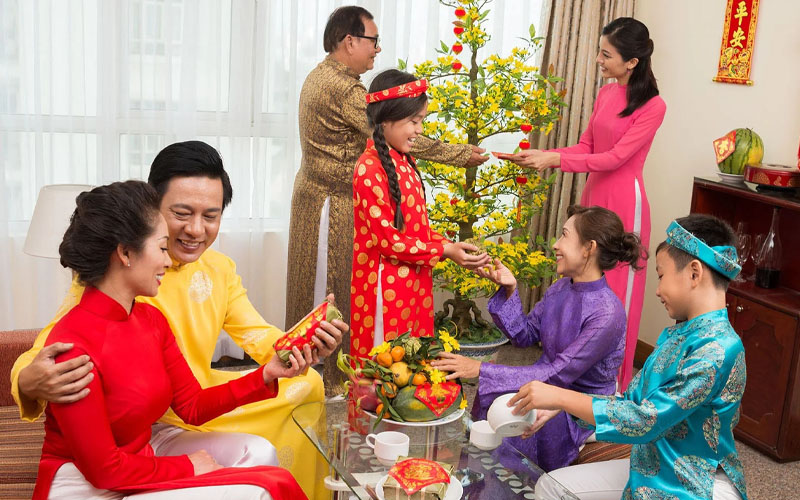
IELTS Writing Task 2 - Tet Holiday
Trong đề Task 2 có những đề về Festival, Holiday mà chúng ta có thể viết về Tết như dưới đây nha.
IELTS Writing Task 2 sample about Tet
| Most people have forgotten the meaning behind traditional or religious festivals; during festival periods, people nowadays only want to enjoy themselves. To what extent do you agree or disagree with this opinion? |
| It is undeniable that many traditions and religious activities, which were once widely practiced and celebrated, are being replaced by fun-inducing activities, begging the question of negligence and ignorance to the present generations. However, I believe that the symbolic values behind festivals still persist despite a popularization of self-indulgent activities. First of all, it should be noted that the choice of having fun over following the long-standing traditions should not be condemned as a selfish act but rather a transformation of celebratory methods. Zooming in on the customs of Tet Holiday in Vietnam, a general trend can be observed that while older generations honour the holiday by visiting relatives’ houses and organizing social gatherings, the younger generations spend quality time with their family by travelling together. Even though the latter cohort minimizes some traditional customs such as exchanging lucky money or hitting places for luck, they still find a way to strengthen their bonds with family. In essence, the purpose of their action is no difference to that of the older generations and in line with the spirit of Tet Holiday, which is to build stronger connections with loved ones. With the development and diversification of festive activities, it would be injudicious to attribute entertainment with the dismissal of traditional and religious value without considering the environmental factors. Through times, many age-old rituals and customs have become obsolete, hence, inapplicable in the modern era. A few decades ago, when the majority of the world were suffering from hunger and poverty, an abundance in food served during festive periods was emphasized and regarded as a symbol of a productive harvest and prosperity. Fast forward to the present time, the lack of food is no longer a concern thanks to world peace and advanced technology; therefore, people no longer focus on preparing overflowing feasts but rather place more resources on other essential aspects of human needs, such as enjoyment and relaxation. A prominent shift in terms of how people celebrate traditional festivals can be derived from the examples and reasonings given above. I believe that such change should not equate to the loss of the festive significance but it should be understood as an adaptation of an archaic custom to a more contemporary and relevant one. |
| (374 words) |
VOCABULARY
- induce (v) /ɪnˈduːs/: gây ra
- negligence (n) /ˈneɡlɪdʒəns/: sự cẩu thả
- ignorance (n) /ˈɪɡnərəns/: sự không biết
- persist (v) /pərˈsɪst/: cố chấp, kiên trì
- indulgent (adj) /ɪnˈdʌldʒənt/: khoan dung
- long-standing (adj) /ˌlɔːŋ ˈstændɪŋ/: có từ lâu đời
- custom (n) /ˈkʌstəm/: tục lệ
- gathering (n) /ˈɡæðərɪŋ/: buổi tụ họp
- cohort (n) /ˈkəʊhɔːrt/: nhóm người
- bond (n) /bɑːnd/: sự gắn kết
- in line with (adj) /ɪn laɪn wɪð/: phù hợp, thống nhất
- diversification (n) /daɪˌvɜːrsɪfɪˈkeɪʃn/: sự đa dạng hóa
- injudicious (adj) /ˌɪndʒuˈdɪʃəs/: dại đột, thiếu suy nghĩ
- dismissal (n) /dɪsˈmɪsl/: sự gạt bỏ
- ritual (n) /ˈrɪtʃuəl/: nghi lễ, nghi thức
- obsolete (adj) /ˌɑːbsəˈliːt/: lạc hậu
- abundance (n) /əˈbʌndəns/: sự nhiều, giàu có
- prosperity (n) /prɑːˈsperəti/: sự thịnh vượng
- feast (n) /fiːst/ = bữa tiệc
- essential (adj) /ɪˈsenʃl/: quan trọng, thiết yếu
- prominent (adj) /ˈprɑːmɪnənt/: nổi bật
- shift (n) /ʃɪft/: sự chuyển đổi
- equate to (phr. v) /ɪˈkweɪt tə/: tương đương, bằng với
- archaic (adj) /ɑːrˈkeɪɪk/: cổ xưa
- contemporary (adj) /kənˈtempəreri/: hiện đại
- relevant (adj) /ˈreləvənt/: thích đáng
Trên đây là một số đoạn văn về Tết tiếng Anh hay, cả nhà cùng tham khảo để cùng giới thiệu về ngày Tết tiếng Anh hay hơn, đặc biệt là viết bài Writing Task 2 ấn tượng nhé.
Xem thêm về Tết trong Speaking: Giới thiệu ngày Tết bằng tiếng Anh - IELTS Speaking: Tet Holiday

